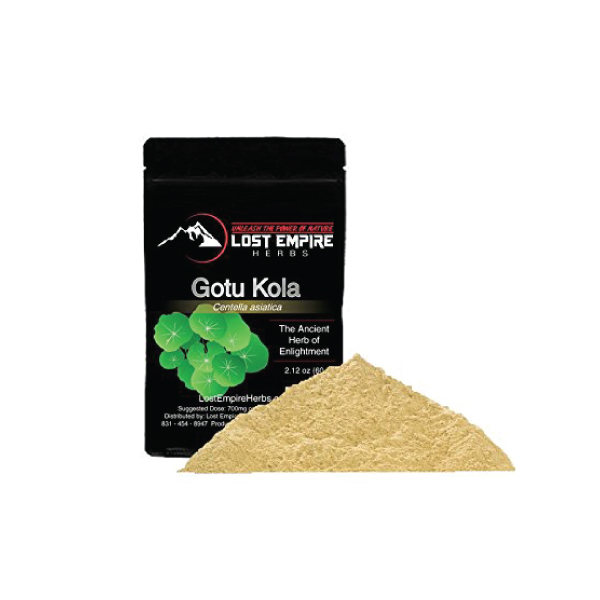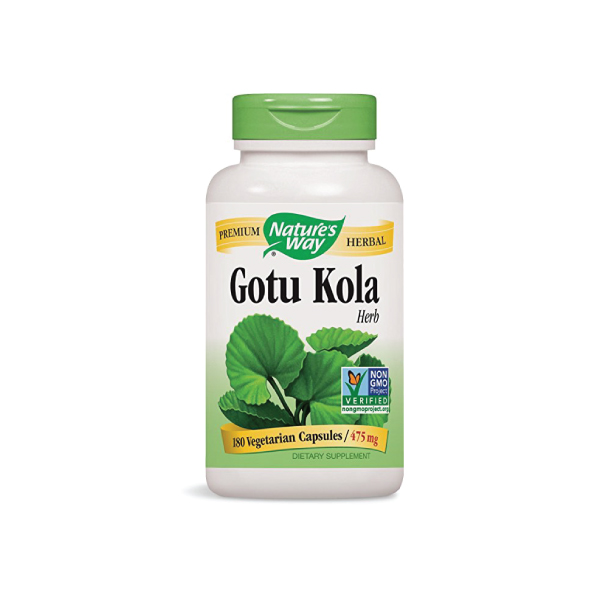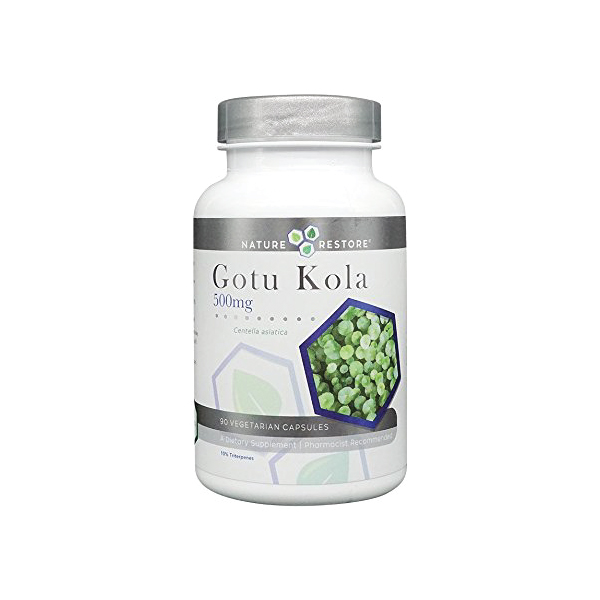What is Gotu Kola?
Gotu Kola, also known as Brahmi in India where it originates from, is a common brain tonic herb in the Ayurvedic and Traditional Chinese medical systems.
Modern research has since shed more light on this classification — identifying how and to what extent it improves cognitive function.
You can find gotu kola or gotu kola its derivatives in various nootropic formulas.
Other uses for gotu kola include the promotion of skin and wound healing, eczema, digestive support, and infections.
It's also great as a vegetable — rich in vitamins B and C, amino acids, minerals, and various other phytonutrients.
What is Gotu Kola Used For?
Gotu kola is mainly used for treating neurological and skin disorders.
Topically it's used for healing wounds and infections.
Traditional Uses of Gotu Kola
+ Western Herbal Medicine
In western herbal medicine, gotu kola was used mainly as a nervine, depurative, and vulnerary. It was especially useful in connective tissue and skin healing. [4].
In Australia, the leaves were consumed from a similar species for arthritis [4].
+ Ayurveda
Gotu kola is one of the highly esteemed Rasayana herbs of the Ayurvedic medical system. This means it is used to improve the mind body and spirit in much the same way as a tonic herb from China, or an adaptogenic herb of western herbal medicine.
The Sanskrit name Brahmi means "from Brahma," who is a central deity in the Hindu pantheon [4]. This shows the level of distinction gotu kola has in this medical system.
+ Traditional Chinese Medicine
Gotu Kola was used in the traditional Chinese medical system for its ability to clear "damp-heat," cool the blood, stop bleeding and clear the liver. It was also suggested to brighten the eyes. [4].
Many of the medical systems of South Asia used gotu kola for skin conditions and infections [4].
Herb Details: Gotu Kola
Herbal Actions:
- Nervine
- Neuroprotective
- Nootropic
- Vulnerary
- Anticonvulsant
- Antinflammatory
- Antiulcer
- Hepatoprotective
- Immunostimulant
- Cardioprotective
- Antitumor
- Antiviral
- Antibacterial
- Antifungal
- Antioxidant
Weekly Dose
- (1:2 Liquid Extract)
15–40 mL - View Dosage Chart
Part Used
- Leaves & Leaf Juice
Family Name
- Apiaceae
Distribution
- Southeeast Asia, Australia, South Africa, Madagascar
Constituents of Interest
- Asiatic acid
- Madecassic acids
Common Names
- Gotu Kola
- Asiatic Pennywort
- Indian Pennywort
- Marsh Pennywort
- Ji Xue Cao (China)
- Bemgsag
- Brahmi (Sanskrit)
- Tsubo Kusa (Japan)
- Indian Water Navelwort
- Wild Violet
- Tiger Herb
Pregnancy
No adverse reactions expected.
Duration of Use
- Avoid long-term use in therapeutic doses.
Products Containing Gotu Kola
Botanical Information
The Apiaceae family of plants is most commonly known as the carrot family. This family contains 3700 species separated into 434 genera.
Other important members of this large family include angelica, anise, asafoetida, carrot, chervil, coriander, cumin, dill, fennel, hemlock, lovage, parsley, and sea holly.
Habitat, Ecology, & Distribution:
Centella asiatica is native to Southeast Asia, including India, Sri Lanka, China, Indonesia, Malaysia, Australia, and is also found in South Africa and Madagascar [2].
Also cultivated for its medicinal value in some countries including turkey [2].
Pharmacology & Medical Research
+ Anxiety
Methanol and ethyl acetate extracts of C. asiatica have been shown to reduce anxiety in mice [2].
+ Antioxidant
Centella asiatica has been shown to produce antioxidant effects significantly in multiple studies [2].
+ Convulsions
Shown to produce anticonvulsant effects [2]. (Still compiling research).
+ Nootropic
The positive effects on brain aging, as reported by Ilkay Erdogan Orhan, (2012), is generally attributed to its 2 major triterpene saponosides (asiatic acid, madecassic acids), and their heterosides, and is due to multiple mechanisms.
The hydroalcoholic extract of Centella asiatica was shown to inhibit acetylcholinesterase (50% inhibition rate at 150μg/ml concentration of extract). This has been the target of many medications for Alzheimer's, as an increase in acetylcholine has been found pertinent to the progression of the disease [2].
Tyrosinase has been linked with Parkinson's disease through its role in neuromelanin formation in the brain and may be associated with dopamine neurotoxicity associated with the neurodegeneration associated with Parkinson's disease. Centella asiatica ethanol extract has been shown to produce inhibitory effects against this enzyme [2].
The succas and fresh leaf extract of this plant has been shown to augment dendritic arborization in neurons, and reduce levels of β-amyloid plaques in the hippocampus in mice [2].
Additionally, relevant actions found in Gotu Kola include:
- Shown to produce protective effects against mitochondrial damage [2].
- Shown to produce anticonvulsant effects [2].
- Reduces lipid peroxidation [2].
- potentiated the effects of sleep-inducing drugs (pentobarbital) [2].
- Increased activity of Na+/K+/ATPase [2].
Neuroprotective effects are likely the result of decreasing protein carbonyl, and lipid peroxidation in the brain, dendritic arborization augmentation, increased Na+/K+/ATPase activity, inhibition of tyrosinase and acetylcholinesterase [2]. N. Giribabu et al., (2014) reports C. asiatica may stimulate nerve cell regeneration in vitro (a significant finding) [3]. This study was able to prove in their research that this botanical provides protective effects in the hippocampus against diabetes-induced damage, and suggested this was through anti-inflammatory, and antioxidant effects. These effects were reflected by ATPase activity in this region of the brain.
The hippocampus of the brain is involved in both short, and long term memory. Both hyperglycemia and hypoglycemia has been shown to cause hippocampal injury which may lead to amnesia or other memory disorders such as Alzheimer's disease.
Centella asiatica has also been shown to increase the activity of glutamic acid decarboxylase (GAD), which is an enzyme responsible for GABA metabolism [2].
+ Cancer
Centella asiatica succas has been shown to reduce liver tumors and may prove useful in preventing and treating liver cancers. A few studies have shown this botanical can induce apoptosis in many types of cancer and produces cytotoxic effects on fibroblast cells [1, 3].
Centella asiatica extracts (including succas) also offers its chemoprotective effects through a change in the expression of c-myc (promotes cell cycle progression), c-fos (cell cycle regulation, differentiation, and transformation), and c-erbB2 (induces changes carried out by c-fos) oncogenes in exposed cells. [1].
The antioxidant actions of chemoprotection may also play a significant role in chemoprotection [1].
+ Gastrointestinal Tract
Strengthens the gastrointestinal barrier [3]. (Still compiling research)
+ Hepatoprotective
F. Hussin et al., (2014) suggested that Centella asiatica juice (succas) can prevent, and treat hepatocarcinomas, and maintain the overall health of this organ.
+ Immunomodulator
Reported to produce modulatory effects on the immune system [3].
+ Sedative
The sedative effects of Centella asiatica are mainly attributed to brahmoside and brahminoside (triterpene derivatives).
Phytochemistry
Centella asiatica contains triterpene saponosides (asiatic acid, madecassic acid, asiaticoside,madicassoside, madasiatic acid, betulinic acid, thankunic acid, isothankunic acid, brahmic acid, centellin, centellicin, asiaticin, bayogenin, terminolic acid, centellasapogenol A, centellasaponins A-D, ursolic acid, promolic acid,), flavonoid derivatives (quercetin, kaempferol, patuletin, rutin, apigenin, castilliferol, castillicetin, myricetin), polysaccharides, polyacetylenes, sterols, phenolic acids, isochlorogenic acid [2, 4].
The essential oils mostly involved monoterpene, and sesquiterpene derivatives. Ilkay Erdogan Orhan, (2012) suggests the major component is α-copaene. [2].
Clinical Applications Of Gotu Kola:
The major clinical applications of gotu kola surround its ability to interact with, and protect specific neurological processes in the brain. These include acetylcholine, tyrosinase, amyloid-beta, and GABA.
Cautions:
Caution advised if used in combination with diabetes due to the chance of increasing blood glucose levels.
Contact dermatitis is rare but has been reported in some individuals
Avoid use if pregnant or trying to fall pregnant.
Toxicity
Contact dermatitis and other skin irritations have been reported though are rare, infertility in mice has also been reported in earlier studies, and may induce spontaneous abortion after chronic use, therefore should not be taken during pregnancy or while attempting to become pregnant, may increase blood sugar levels, so care is advised with diabetic patients [2].
This herb is generally regarded as safe and can be used long term. The above cautions are extremely rare, and little other evidence has been found for the negative effects of gotu kola aside from some mild gastrointestinal discomfort or dermatitis. In fact, it is commonly a food herb in Bangladesh, Sri Lanka, and South Africa, with no reported negative side effects [4].
Recent Blog Posts:
References:
Faridah Hussin, Sima Ataollahi Eshkoor, Asmah Rahmat, Fauziah Othman and Abdah Akim. (2014). The centella asiatica juice effects on DNA damage, apoptosis and gene expression in hepatocellular carcinoma (HCC). BMC Complementary and Alternative Medicine. 14:32.
Ilkay Erdogan Orhan (2012). Centella asiatica (L.) Urban: From Traditional Medicine to Modern Medicine with Neuroprotective Potential. Evidence-Based Complementary and Alternative Medicine. doi:10.1155/2012/946259
Nelli Giribabu, Nelli Srinivasarao, Somesula Swapna Rekha, Sekaran Muniandy, and Naguib Salleh.(2014). Centella asiatica Attenuates Diabetes Induced Hippocampal Changes in Experimental Diabetic Rats. Evidence-Based Complementary and Alternative Medicine.
Bone K, Mills S. (2013). Principles and Practice of Phytotherapy. Elsevier health. China. (Pg. 657-670).














As COVID-19 continues to spread around the world, we’re getting a lot of questions on what the potential role of herbal medicine is during the outbreak. Learn how the virus works and how to limit your chances of transmission.